The Sweetest Portuguese Custard Tarts Recipe You’ll Ever Make
Golden and flaky, these portuguese custard tarts whisper stories of lisbon’s cobblestone streets and sweet traditions.
Delicate pastry shells cradle a silky egg custard with caramelized edges that crackle under your fork.
Every baker secretly dreams of mastering these delectable treats that originated in são jorge monastery.
Monks crafted the original recipe centuries ago, turning simple ingredients into culinary magic.
Each bite transports you to sun-drenched portuguese cafes where locals savor these delightful pastéis de nata.
The secret lies in paper-thin pastry and a custard that balances richness with subtle sweetness.
Crisp, creamy, and utterly irresistible – you won’t be able to stop at just one.
Follow our foolproof method to bring a taste of portugal straight to your kitchen.
Portuguese Custard Tarts That Delight
Ingredients for Portuguese Custard Tarts
Dough Ingredients:Custard Ingredients:Finishing Ingredients:How to Make Portuguese Custard Tarts
Step 1: Create Silky Dough
Grab flour, salt, and water. Toss them into a stand mixer with a hook attachment.
Blend for about 30 seconds until the dough feels soft and pulls away from the bowl’s sides.
Step 2: Let Dough Relax
Move the dough onto a floured surface.
Shape it into a neat 6-inch square. Dust with extra flour, wrap in plastic, and let it chill for 15 minutes.
Step 3: Roll Out the Canvas
Stretch the dough into an expansive 18-inch square. Use a scraper to lift and prevent sticking by adding flour underneath.
Step 4: Butter the Surface
Clear away excess flour from the dough. Trim any uneven edges.
Take a small spatula and dot butter across two-thirds of the dough, leaving a small border.
Step 5: Create Delicate Folds
Fold the unbuttered right section over.
Gently press down the packet, pushing out any trapped air. Pinch the edges closed.
Step 6: Second Layer of Magic
Rotate the dough 90 degrees. Roll out again into an 18-inch square.
Repeat the buttering and folding technique.
Step 7: Final Rolling Technique
Turn the packet again.
Roll into an 18-by-21-inch rectangle. Spread remaining butter across the entire surface.
Step 8: Form Delicate Logs
Carefully roll the dough into a tight log. Trim the ends and slice in half.
Wrap each piece in plastic and refrigerate for 2 hours or overnight.
Step 9: Craft Creamy Custard
Whisk flour with milk until smooth.
Boil sugar, cinnamon, and water to 220°F. Scald remaining milk in a separate pan.
Step 10: Blend Custard Ingredients
Slowly incorporate hot milk into flour mixture. Remove cinnamon stick.
Gradually add sugar syrup while whisking. Mix in vanilla and egg yolks.
Strain the mixture and cover.
Step 11: Bake to Golden Perfection
Crank the oven to 550°F with baking stones.
Roll out pastry, cut into pieces, and shape into muffin cups. Fill with custard.
Bake until edges turn golden brown, around 10-12 minutes.
Step 12: Serve With Flair
Let tarts cool slightly in the pan.
Transfer to a rack. Sprinkle with powdered sugar and cinnamon if desired.
Enjoy warm and fresh!
Pro Tips to Perfect Custard Tarts
Variations on Portuguese Custard Tarts
Pairings That Enhance Custard Tarts
Storage Advice for Portuguese Custard Tarts
FAQs
The unique laminated dough technique creates incredibly flaky, buttery layers by repeatedly folding and rolling the dough with butter, similar to making croissants.
While time-consuming, the recipe requires basic baking skills. The key is patience during dough folding and precise temperature control for both pastry and custard.
Use whole milk for best results. Egg yolks are crucial for authentic richness, so avoid substituting them. Vanilla extract should remain authentic to traditional flavor profile.
Print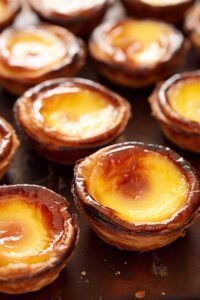
Portuguese Custard Tarts Recipe
- Total Time: 3 hours 12 minutes
- Yield: 12 1x
Description
Pastel de nata, Portugal’s beloved custard tarts, blend creamy egg filling with crisp, flaky pastry. Delicate layers and caramelized tops make this classic dessert a delightful treat for you.
Ingredients
- 1 cup unsalted butter (at room temperature, stirred until smooth; approximately 227 grams)
- 2 cups all-purpose flour (approximately 272 grams)
- 14 tbsps water (approximately 207 mL)
- 1/4 tsp sea salt
- 1 1/3 cups granulated sugar (approximately 264 grams)
- 6 egg yolks (whisked)
- 1 1/4 cups milk (divided; approximately 296 mL)
- 3 tbsps all-purpose flour (approximately 27 grams)
- 2/3 cup water (approximately 158 mL)
- 1 cinnamon stick
- 1/2 tsp pure vanilla extract
- powdered sugar (optional for garnish)
- cinnamon (optional for garnish)
Instructions
- Create a soft, pillowy dough by mixing flour, salt, and water in a stand mixer with a hook attachment for approximately 30 seconds until the mixture cleanly pulls away from the bowl’s sides.
- Transfer the dough to a floured surface, shape into a 6-inch square using a pastry scraper, dust with additional flour, cover with plastic wrap, and let rest for 15 minutes to relax the gluten.
- Expand the dough into an 18-inch square, using the scraper to lift and prevent sticking by adding flour underneath.
- Remove excess flour from the dough’s surface, trim uneven edges, and apply one-third of the butter to the left two-thirds of the dough, leaving a 1-inch border.
- Fold the unbuttered right third of the dough over, then fold the left third on top. Pat down to release air bubbles and seal the edges, brushing away excess flour.
- Rotate the dough packet 90 degrees, roll into an 18-inch square, and repeat the buttering and folding process to create multiple layers.
- For the final rolling, turn the packet 90 degrees and stretch into an 18-by-21-inch rectangle, spreading the remaining butter across the entire surface.
- Tightly roll the dough into a log, trimming the ends and cutting in half. Wrap each piece in plastic and refrigerate for 2 hours or overnight.
- Prepare the custard by whisking flour with milk, creating a smooth base. Simultaneously, boil sugar, cinnamon stick, and water to 220°F, and scald the remaining milk in a separate pan.
- Gradually incorporate hot milk into the flour mixture, remove the cinnamon stick, and slowly add the sugar syrup while continuously whisking. Blend in vanilla and egg yolks, then strain the mixture and cover.
- Heat the oven to 550°F with baking stones for one hour. Roll out the chilled pastry, cut into sections, and press into a muffin pan. Fill with prepared custard and bake until pastry edges turn golden brown, approximately 10-12 minutes.
- Cool the tarts briefly in the pan, then transfer to a cooling rack. Serve warm, optionally dusting with powdered sugar and cinnamon for an elegant finish.
Notes
- Chill the dough overnight for better texture and easier handling, allowing gluten to relax and flavors to develop.
- Use high-quality butter with a high fat content to achieve flakier, more delicate pastry layers.
- Temperature control is crucial when making custard; use a candy thermometer to ensure precise heating and prevent curdling.
- For dietary variations, substitute whole milk with almond or oat milk, and use coconut sugar for a lower glycemic index alternative.
- Prep Time: 3 hours
- Cook Time: 12 minutes
- Category: Desserts, Snacks
- Method: Baking
- Cuisine: Portuguese
Nutrition
- Serving Size: 12
- Calories: 227
- Sugar: 19 g
- Sodium: 40 mg
- Fat: 11 g
- Saturated Fat: 7 g
- Unsaturated Fat: 4 g
- Trans Fat: 0.2 g
- Carbohydrates: 28 g
- Fiber: 1 g
- Protein: 3 g
- Cholesterol: 110 mg

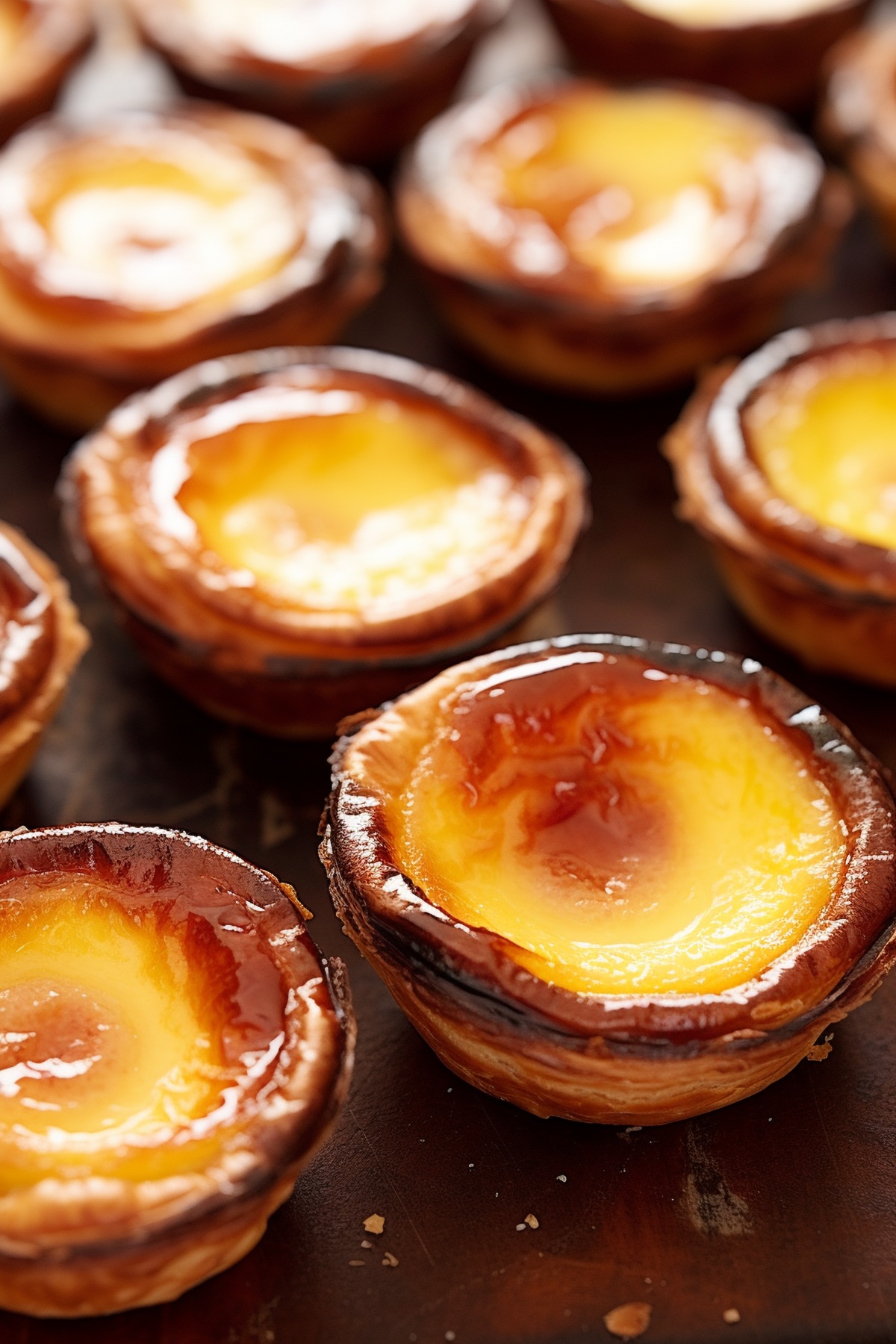
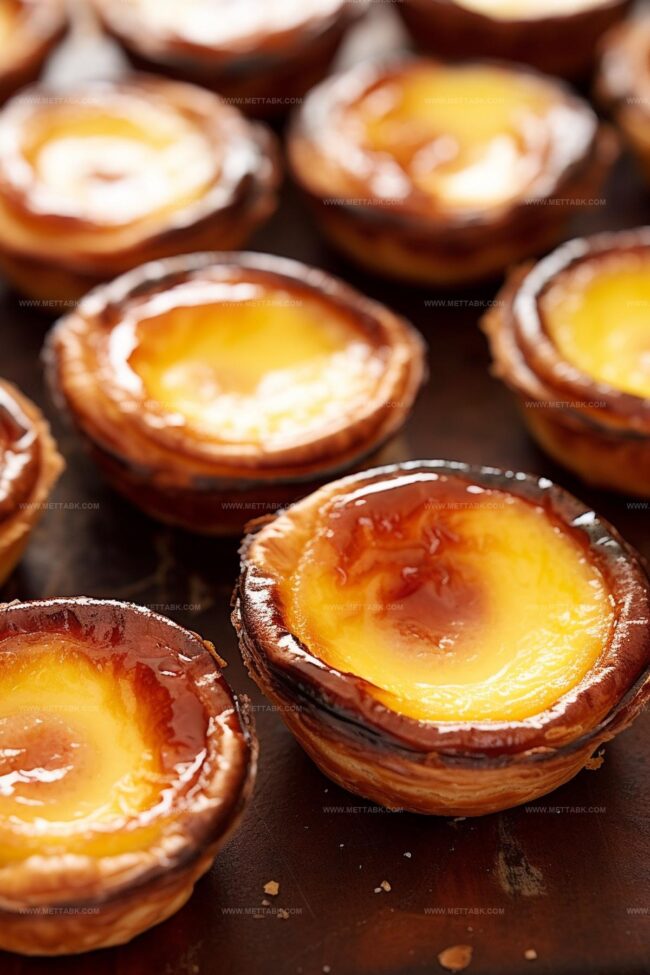
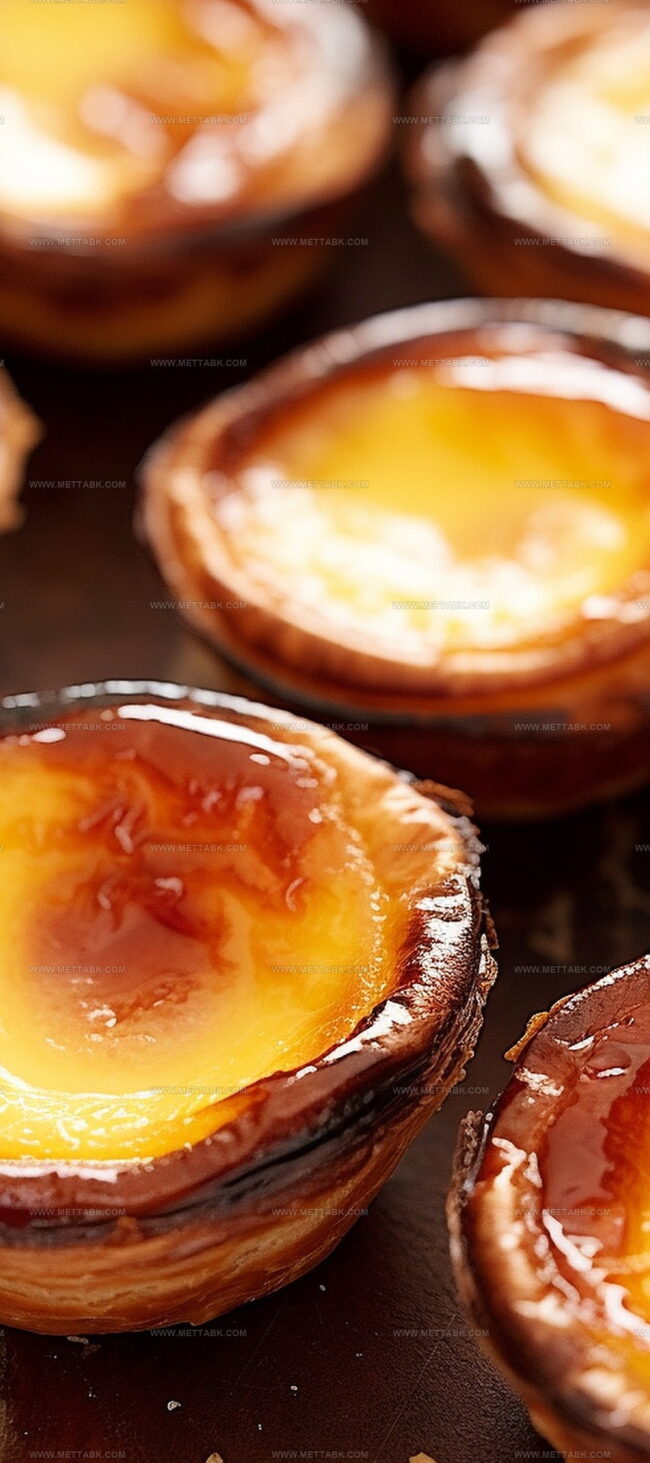
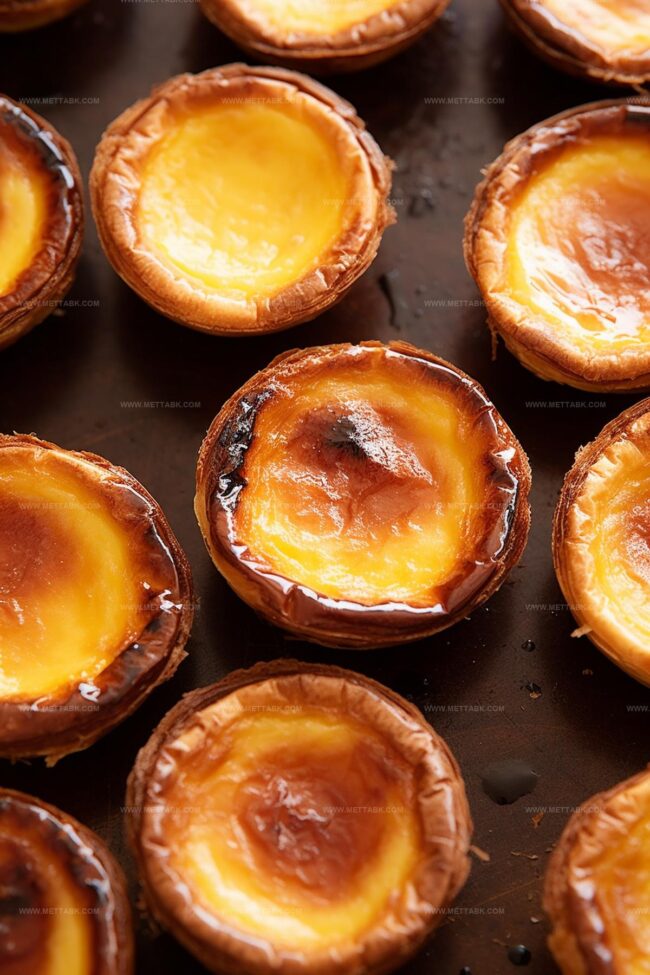
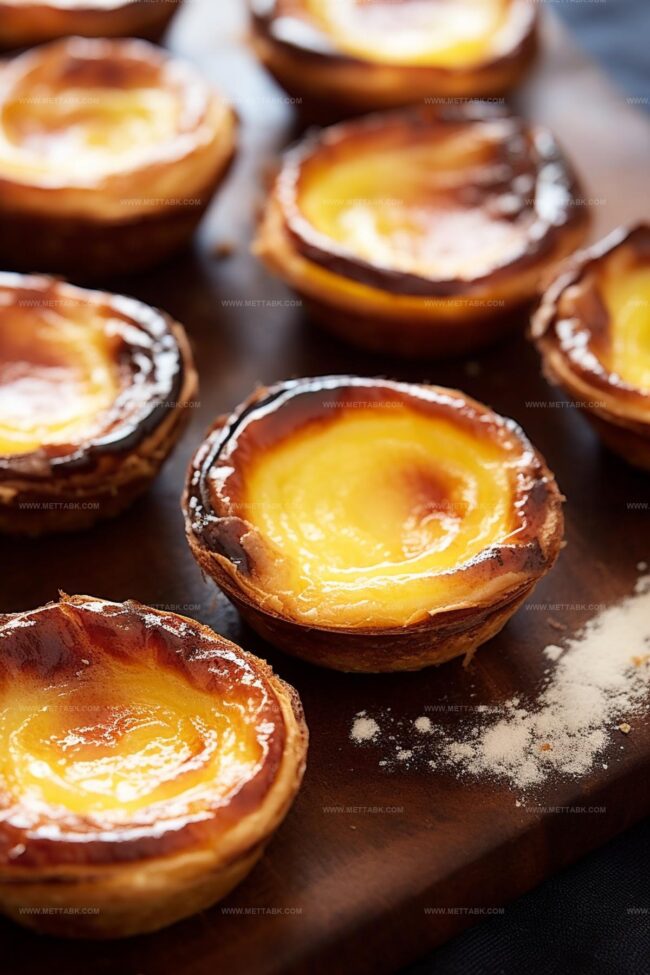
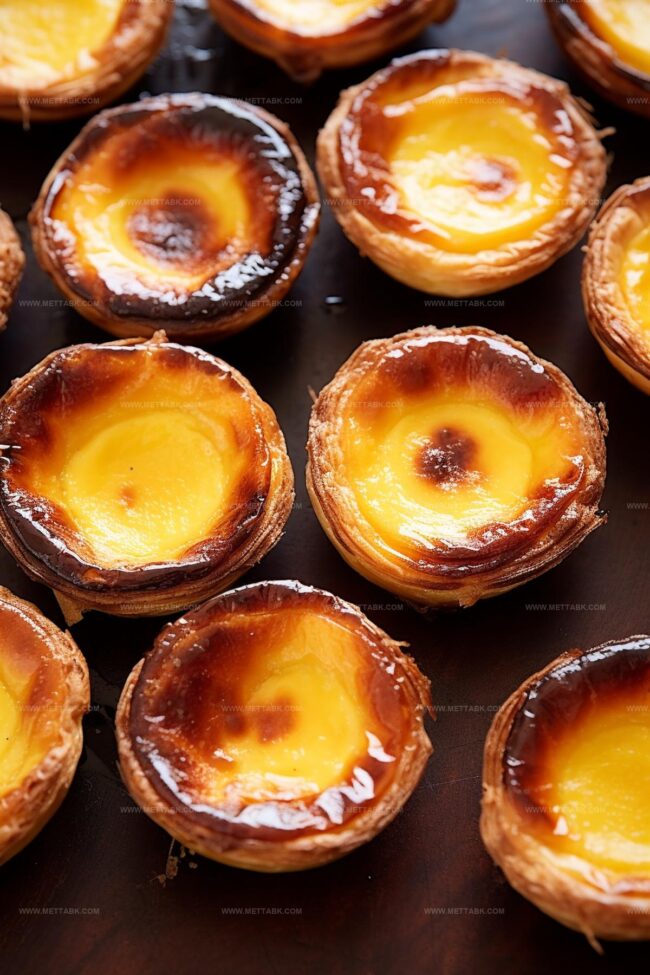
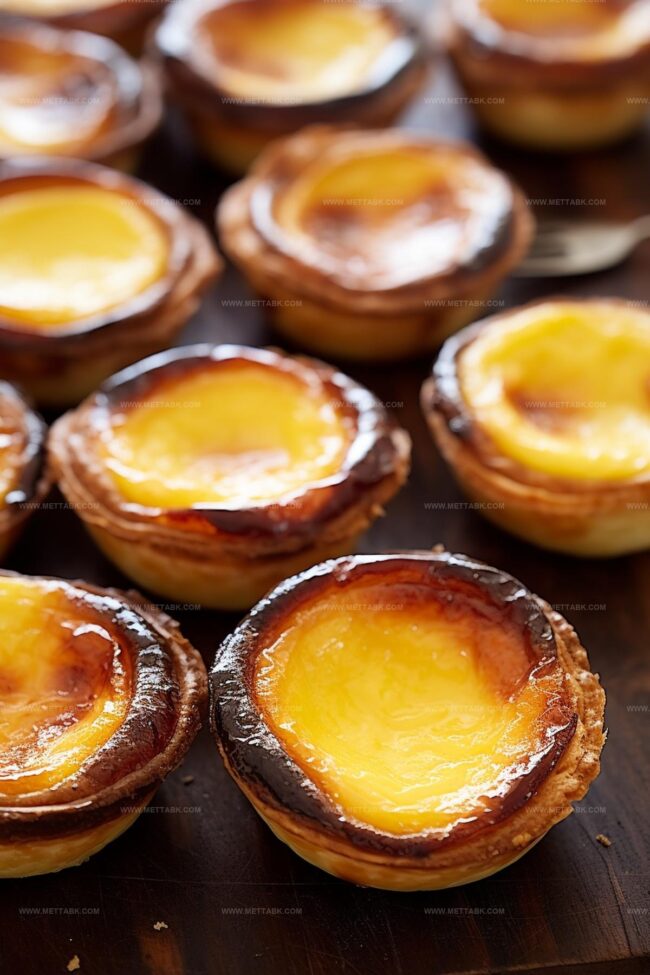
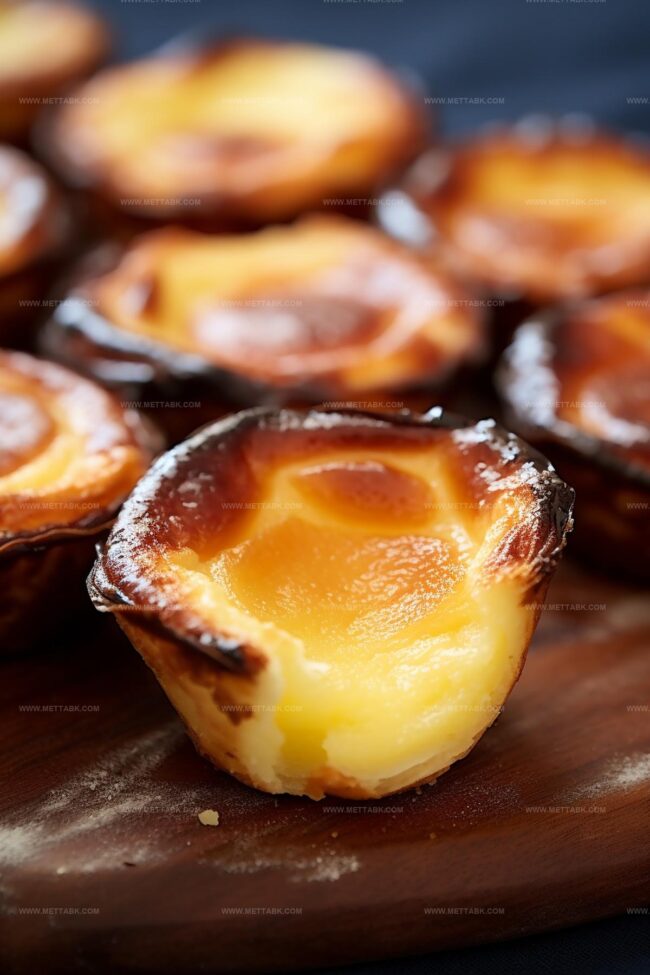
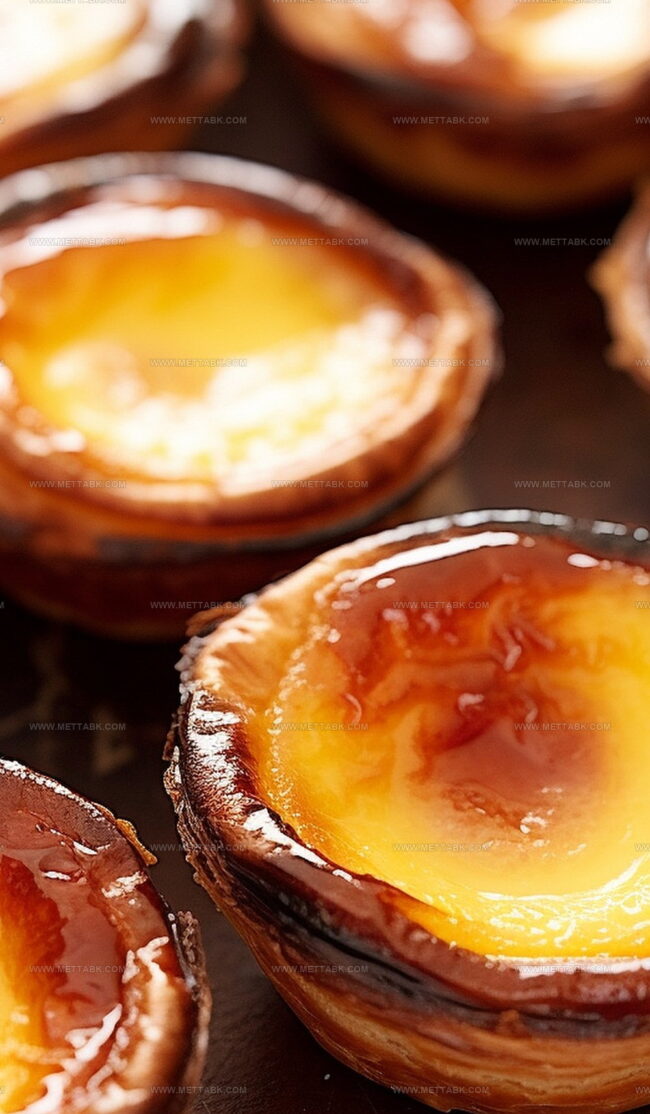
Clara Bennett
Contributing Recipe Developer & Food Writer
Expertise
Baking and Pastry Development, Gluten-Free and Allergy-Friendly Recipe Creation, Culinary Storytelling and Food Journalism, Recipe Testing and Standardization, Southern Comfort Foods and Modern Twists
Education
Sullivan University – National Center for Hospitality Studies
Associate Degree in Culinary Arts
Focus: Baking and Pastry Arts, Recipe Testing, and Culinary Journalism.
Clara specialized in crafting desserts that blend classic Southern comfort with modern techniques, while developing strong writing skills to tell the story behind every dish.
Lane Community College (Certificate Program)
Certificate in Food Writing and Photography
Focus: Culinary storytelling, recipe formatting, food styling, and visual presentation.
Clara’s love of baking started young, powered by homemade pies, biscuits, and stories passed around the family table.
After earning her degree at Sullivan University and a food writing certificate at Lane Community College, she turned her passion into a craft: sharing recipes that are simple, soulful, and always full of heart.
She’s big on bold flavors, flexible ideas, and creating sweets that fit any table (yes, even if you’re gluten-free). When she’s not baking, you’ll find her wandering farmers’ markets, styling food for the next photo shoot, or working on her ever-growing recipe journal.